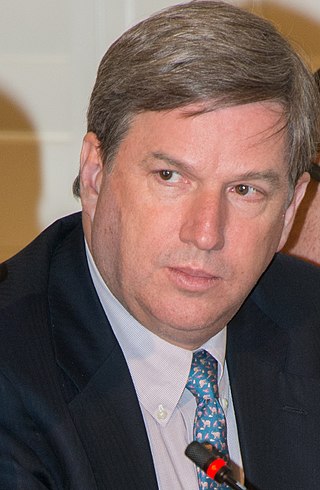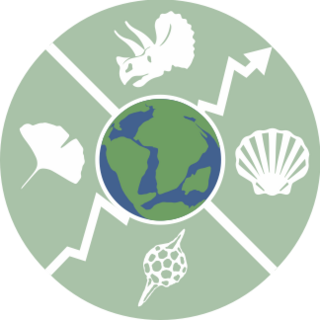
Edward Osborne WilsonForMemRS was an American biologist, naturalist, ecologist, and entomologist known for developing the field of sociobiology.

Thomas Eugene Lovejoy III was an American ecologist who was President of the Amazon Biodiversity Center, a Senior Fellow at the United Nations Foundation and a university professor in the Environmental Science and Policy department at George Mason University. Lovejoy was the World Bank's chief biodiversity advisor and the lead specialist for environment for Latin America and the Caribbean as well as senior advisor to the president of the United Nations Foundation. In 2008, he also was the first Biodiversity Chair of the H. John Heinz III Center for Science, Economics and the Environment to 2013. Previously he served as president of the Heinz Center since May 2002. Lovejoy introduced the term biological diversity to the scientific community in 1980. He was a past chair of the Scientific Technical Advisory Panel (STAP) for the Global Environment Facility (GEF), the multibillion-dollar funding mechanism for developing countries in support of their obligations under international environmental conventions.

Sylvia Alice Earle is an American marine biologist, oceanographer, explorer, author, and lecturer. She has been a National Geographic Explorer at Large since 1998. Earle was the first female chief scientist of the U.S. National Oceanic and Atmospheric Administration, and was named by Time Magazine as its first Hero for the Planet in 1998.

An ant colony is a population of a single ant species able to maintain its complete lifecycle. Ant colonies are eusocial, communal, and efficiently organized and are very much like those found in other social Hymenoptera, though the various groups of these developed sociality independently through convergent evolution. The typical colony consists of one or more egg-laying queens, numerous sterile females and, seasonally, many winged sexual males and females. In order to establish new colonies, ants undertake flights that occur at species-characteristic times of the day. Swarms of the winged sexuals depart the nest in search of other nests. The males die shortly thereafter, along with most of the females. A small percentage of the females survive to initiate new nests.
Robert Hale Ives Goddard III is a linguist and a curator emeritus in the Department of Anthropology of the National Museum of Natural History at the Smithsonian Institution. He is widely considered the leading expert on the Algonquian languages and the larger Algic language family.

Leonard Carmichael was an American educator and psychologist. In addition, he became the seventh secretary of the Smithsonian Institution in 1953.

Margaret J. Geller is an American astrophysicist at the Center for Astrophysics | Harvard & Smithsonian. Her work has included pioneering maps of the nearby universe, studies of the relationship between galaxies and their environment, and the development and application of methods for measuring the distribution of matter in the universe.
Caryl Parker Haskins (1908–2001) was an American scientist, author, inventor, philanthropist, governmental adviser and pioneering entomologist in the study of ant biology. Along with Franklin S. Cooper, he founded the Haskins Laboratories, a private, non-profit research laboratory, in 1935. He was professor at Union College. He was also on the boards of non-profits such as the Carnegie Institution of Washington and the Smithsonian Institution.

Joseph Charles Bequaert was an American naturalist of Belgian origin, born 24 May 1886 in Torhout (Belgium) and died on 12 January 1982 in Amherst, Massachusetts.

Cristián Samper is a Colombian-American tropical biologist specializing in conservation biology and environmental policy. He is the Managing Director and Leader of Nature Solutions at the Bezos Earth Fund. He served as President and CEO of WCS from 2012 to 2022. He was the Director of the Smithsonian Institution's National Museum of Natural History, the world's largest natural history collection, from 2003 to 2012, and served as acting Secretary of the Smithsonian from 2007 to 2008, the first Latin American to hold the position. In April 2015, Samper was inducted into the American Academy of Arts and Sciences.
Robert Dunn is a biologist, writer and professor in the Department of Applied Ecology at North Carolina State University. He has written several books and his science essays have appeared at magazines such as BBC Wildlife Magazine, Scientific American, Smithsonian Magazine, National Geographic and others. He has become known for efforts to involve the public as citizen scientists in arthropod surveys and bacterial flora studies. His projects include studies of belly button biodiversity, mites that live on human faces, ants in backyards, and fungi and bacteria in houses.

This is a collection of lists of organisms by their population. While most of the numbers are estimates, they have been made by the experts in their fields. Species population is a science falling under the purview of population ecology and biogeography. Individuals are counted by census, as carried out for the piping plover; using the transect method, as done for the mountain plover; and beginning in 2012 by satellite, with the emperor penguin being first subject counted in this manner.
Don Ellis Wilson is an American zoologist. His main research field is mammalogy, especially the group of bats which he studied in 65 countries around the world.

The Paleobiology Database is an online resource for information on the distribution and classification of fossil animals, plants, and microorganisms.

Shankar Vedantam is an American journalist, writer, and science correspondent. His reporting focuses on human behavior and the social sciences. He is best known for his Hidden Brain family of products: book, podcast, and radio program.

Vicki Ann Funk was an American botanist and curator at the Smithsonian's National Museum of Natural History, known for her work on members of the composite family (Asteraceae) including collecting plants in many parts of the world, as well as her synthetic work on phylogenetics and biogeography.
John F. Ross is an American historian and author. He is the recipient of the 2011 Fort Ticonderoga Award for Contributions to American History.
Walter John Emil Kress is an American botanist and the vice-president for science at the National Museum of Natural History. He currently holds the appointment (2010) as the Director of the Consortium for Understanding and Sustaining a Biodiverse Planet at the Smithsonian and is the former Executive Director of the Association for Tropical Biology and Conservation.
Abigail Marsh is a psychologist and neuroscientist who works as a professor at Georgetown University's Department of Psychology and the Interdisciplinary Neuroscience Program, where she is the director of the Laboratory on Social and Affective Neuroscience.
Nicholas Pyenson is a paleontologist and the curator of fossil marine mammals at the Smithsonian Institution’s National Museum of Natural History in Washington, DC. He is the author of numerous popular science works including the book Spying on Whales: The Past, Present, and Future of Earth's Most Awesome Creatures.











